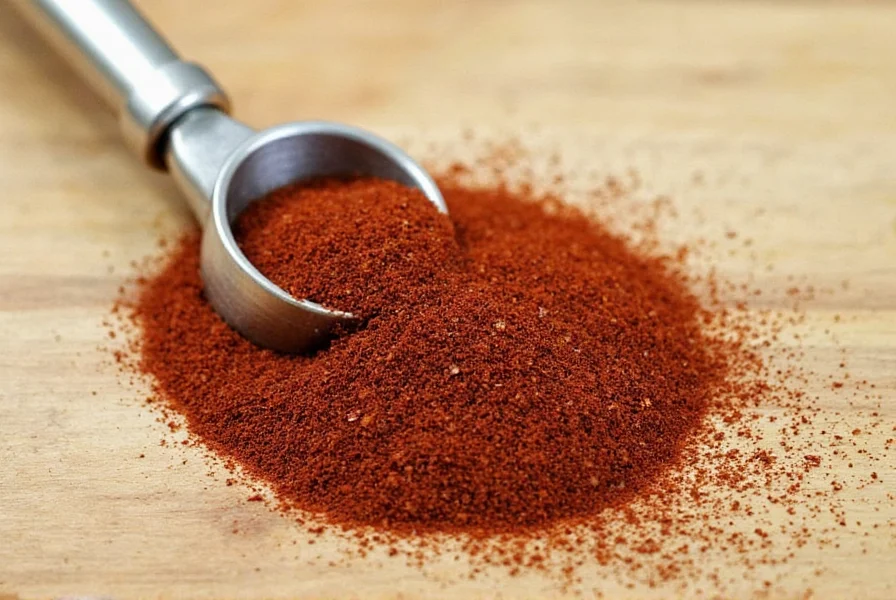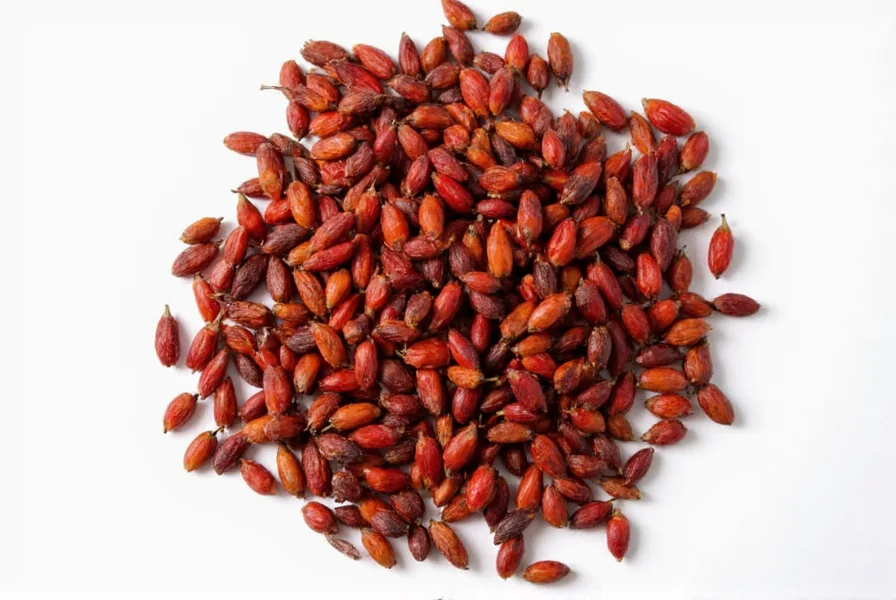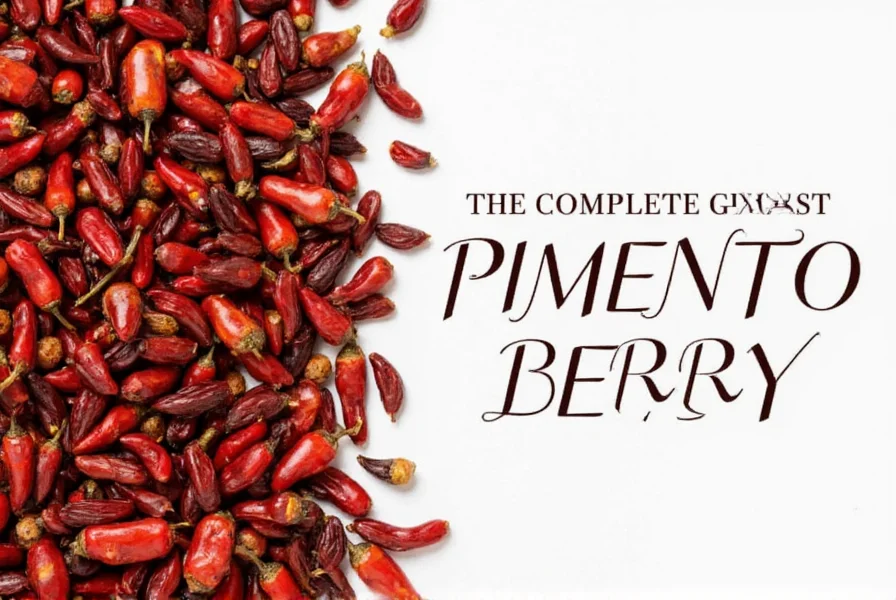Despite its misleading name, Jamaican allspice represents one of the Caribbean's most prized culinary exports. The small, dark berries grow exclusively in specific tropical climates, with Jamaica producing what many consider the world's finest quality. When dried, these berries develop their distinctive warm, sweet-spicy aroma that has become essential to Jamaican jerk seasoning and many traditional Caribbean dishes.
The True Identity of Jamaican Allspice
Botanically classified as Pimenta dioica, Jamaican allspice goes by several names depending on the region. In Jamaica itself, locals commonly call it pimento—never "allspice." The misnomer originated with English explorers in the 16th century who noted its flavor resembled a blend of spices including cinnamon, nutmeg, and cloves. This historical misunderstanding persists today, causing confusion among home cooks.
The Pimenta dioica tree thrives in Jamaica's mountainous regions, particularly in the Blue Mountains where the combination of altitude, rainfall, and soil composition creates ideal growing conditions. These factors contribute to Jamaican allspice's superior quality compared to varieties grown elsewhere. The berries are harvested twice annually when still green and unripe, then sun-dried until they turn reddish-brown and develop their characteristic aroma.
Flavor Profile and Culinary Applications
Jamaican allspice offers a complex flavor profile that explains its culinary versatility. The initial taste delivers warm sweetness similar to cinnamon, followed by clove-like pungency and subtle nutmeg notes. Unlike spice blends, authentic Jamaican allspice provides this complexity naturally from a single ingredient.
| Characteristic | Description |
|---|---|
| Aroma | Warm, sweet, with notes of clove, cinnamon, and nutmeg |
| Taste | Bright top notes, warm middle, subtle peppery finish |
| Best Used In | Marinades, stews, baked goods, pickling solutions |
| Storage Life | Whole berries: 2-3 years; Ground: 6-12 months |
Chefs prize whole Jamaican allspice berries for their longevity and intense flavor. When ground, the spice loses potency more quickly, which is why many Jamaican cooks prefer to grind berries fresh. The spice works exceptionally well in both sweet and savory applications—from Jamaican ginger beer and fruitcakes to jerk chicken and Caribbean stews.

Authentic Jamaican Allspice vs. International Varieties
While Pimenta dioica grows in other tropical regions, Jamaican allspice maintains distinctive qualities due to the island's unique terroir. Mexican and Central American varieties often lack the complex flavor notes found in authentic Jamaican product. The difference becomes particularly noticeable in traditional Jamaican jerk seasoning, where the allspice's floral notes balance the heat from Scotch bonnet peppers.
When shopping for genuine Jamaican allspice, look for these indicators:
- Whole berries rather than pre-ground powder (for maximum freshness)
- Deep reddish-brown color with slight oil sheen
- Strong, complex aroma when crushed
- "Product of Jamaica" labeling (though some counterfeiting occurs)
Traditional Uses in Jamaican Cuisine
No discussion of Jamaican allspice would be complete without mentioning its role in jerk seasoning—the iconic spice rub that defines much of Jamaica's culinary identity. Authentic jerk seasoning combines freshly ground allspice berries with Scotch bonnet peppers, thyme, and other local ingredients. The allspice provides the foundational flavor that balances the heat and creates jerk's distinctive taste.
Beyond jerk, Jamaican cooks use allspice in numerous traditional preparations:
- Rundown: A coconut milk-based stew where allspice enhances fish or meat flavors
- Pimento dram: A traditional liqueur made by steeping allspice berries in rum
- Brown stew chicken: Allspice complements soy sauce and ginger in this popular dish
- Baking: Essential in Jamaican fruitcake and ginger cake recipes
Proper Storage and Usage Techniques
To preserve Jamaican allspice's complex flavor profile, proper storage proves essential. Whole berries maintain their potency significantly longer than ground spice. Store in an airtight container away from light and heat. For maximum flavor, toast whole berries lightly before grinding—a technique used in traditional Jamaican kitchens for generations.
When substituting in recipes, remember that Jamaican allspice cannot be perfectly replicated by combining other spices. While a mixture of cinnamon, nutmeg, and cloves can approximate the flavor, it lacks the nuanced complexity of genuine allspice. For authentic Caribbean dishes, using real Jamaican allspice makes a noticeable difference in the final result.

Common Misconceptions About Jamaican Allspice
Several persistent myths surround Jamaican allspice. The most common misconception—that it's a spice blend—has already been addressed. Another widespread misunderstanding involves its relationship to actual spices: Jamaican allspice contains none of the spices it resembles; its complex flavor occurs naturally in the berry.
Some believe allspice grows exclusively in Jamaica, but while Jamaica produces the most renowned variety, the Pimenta dioica tree also grows in other Caribbean islands, Mexico, and Central America. However, the specific growing conditions in Jamaica's Blue Mountains create what most connoisseurs consider superior quality with more complex flavor notes.
Conclusion: The Essence of Jamaican Flavor
Jamaican allspice represents far more than just another kitchen spice—it embodies Jamaica's culinary heritage and tropical terroir. Understanding its true nature as a single berry rather than a blend helps home cooks appreciate its unique contribution to global cuisine. When selecting Jamaican allspice, prioritize whole berries from reputable sources to experience the authentic flavor that has made this spice a Caribbean treasure for centuries.
Frequently Asked Questions
Is Jamaican allspice actually a blend of spices?
No, Jamaican allspice is not a spice blend. It's a single dried berry from the Pimenta dioica tree. The name comes from its flavor profile that resembles a combination of cinnamon, cloves, and nutmeg, but it's actually one distinct spice.
What makes Jamaican allspice different from regular allspice?
There is no "regular" allspice separate from Jamaican allspice. All authentic allspice comes from the Pimenta dioica berry. However, Jamaican-grown allspice is considered superior due to the island's ideal growing conditions, particularly in the Blue Mountains, which produce berries with more complex flavor notes than those grown elsewhere.
How should I store Jamaican allspice to maintain freshness?
Store whole Jamaican allspice berries in an airtight container away from light, heat, and moisture. Properly stored, whole berries maintain their potency for 2-3 years. Ground allspice loses flavor more quickly and should be used within 6-12 months. For best results, grind berries fresh as needed rather than purchasing pre-ground spice.
Can I substitute other spices for Jamaican allspice in recipes?
While you can approximate Jamaican allspice with a mixture of 1/2 teaspoon cinnamon, 1/4 teaspoon nutmeg, and 1/4 teaspoon cloves for each teaspoon of allspice required, this won't replicate the authentic flavor. The unique chemical composition of genuine allspice berries creates flavor notes that can't be perfectly duplicated by combining other spices. For authentic Caribbean dishes, real Jamaican allspice makes a noticeable difference.
Why is Jamaican allspice essential for authentic jerk seasoning?
Jamaican allspice provides the foundational flavor in authentic jerk seasoning that balances the heat from Scotch bonnet peppers. Its complex flavor profile—containing warm, sweet, and slightly peppery notes—creates the distinctive taste associated with Jamaican jerk. Without genuine Jamaican allspice, jerk seasoning lacks its characteristic depth and becomes merely spicy rather than complexly flavored.











 浙公网安备
33010002000092号
浙公网安备
33010002000092号 浙B2-20120091-4
浙B2-20120091-4